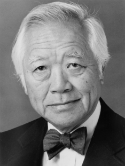Improved survival in epidermoid carcinoma of the anus in association with preoperative multidisciplinary therapy Conference Paper
| Authors: | Enker, W. E.; Heilwell, M.; Janov, A. J.; Quan, S. H.; Magill, G.; Stearns, M. W. Jr; Shank, B.; Learning, R.; Sternberg, S. S. |
| Title: | Improved survival in epidermoid carcinoma of the anus in association with preoperative multidisciplinary therapy |
| Conference Title: | 39th Annual Meeting of the Society of Surgical Oncology |
| Abstract: | From 1972 to 1983, we treated 78 patients who had primary epidermoid carcinoma of the anus. Forty-four of these patients were treated by protocol, while 34 patients were not treated according to protocol. Protocol consisted of fluorouracil (750 mg/m for 5 days) and mitomycin (10 to 15 mg/m on day 1), followed sequentially by 3000 rad (30 Gy) over three weeks, followed by surgery. There were 20 local excisions and 29 abdominoperineal resections in the protocol group, and 11 local excisions and 14 abdominoperineal resections in the nonprotocol group. In the protocol group, 26 patients (59%) had no residual cancer in their operative specimens, while only ten (29.9%) of the nonprotocol patients had no remaining cancer. Four (11.7%) of the 34 nonprotocol patients had pathologically positive inguinal nodes, compared with only three (4.5%) of 44 protocol patients. Thirty-four (77%) of 44 protocol patients remained free of disease, while ten patients experienced local or pelvic recurrence. In contrast, only 17 (50%) of 34 patients in the nonprotocol group remained free of disease. Of 17 recurrences, five were at distant sites. The status at this writing of all patients in the protocol group was 32 (75%), with no evidence of disease, four alive with disease, and eight dead of or with disease. Of the untreated patients, only 11 (32%) remained without evidence of disease, two were alive with disease, and 19 were dead of or with disease. Smaller carcinoma size (<5 cm, 27 of 32 had no evidence of disease), younger age, female gender, and deep infiltration also predicted a statistically significant survival advantage after protocol treatment. Controlled, prospective, multi-institutional trials should stratify for these factors when comparing new treatment modalities. © 1986, American Medical Association. All rights reserved. |
| Keywords: | survival; adult; clinical article; aged; aged, 80 and over; middle aged; cancer surgery; mortality; squamous cell carcinoma; carcinoma, squamous cell; fluorouracil; cancer combination chemotherapy; preoperative care; combined modality therapy; follow-up studies; neoplasm recurrence, local; radiotherapy; mitomycin c; epidemiology; mitomycin; therapy; intravenous drug administration; anus neoplasms; anus carcinoma; large intestine; humans; human; male; female; priority journal |
| Journal Title | Archives of Surgery |
| Volume: | 121 |
| Issue: | 12 |
| Conference Dates: | 1986 May 12-14 |
| Conference Location: | Washington, DC |
| ISBN: | 0004-0010 |
| Publisher: | American Medical Association |
| Date Published: | 1986-12-01 |
| Start Page: | 1386 |
| End Page: | 1390; discussion 1390 |
| Language: | English |
| DOI: | 10.1001/archsurg.1986.01400120032004 |
| PUBMED: | 3789909 |
| PROVIDER: | scopus |
| DOI/URL: | |
| Notes: | Article -- Export Date: 18 August 2021 -- Source: Scopus |
Altmetric
Citation Impact
BMJ Impact Analytics
Related MSK Work






